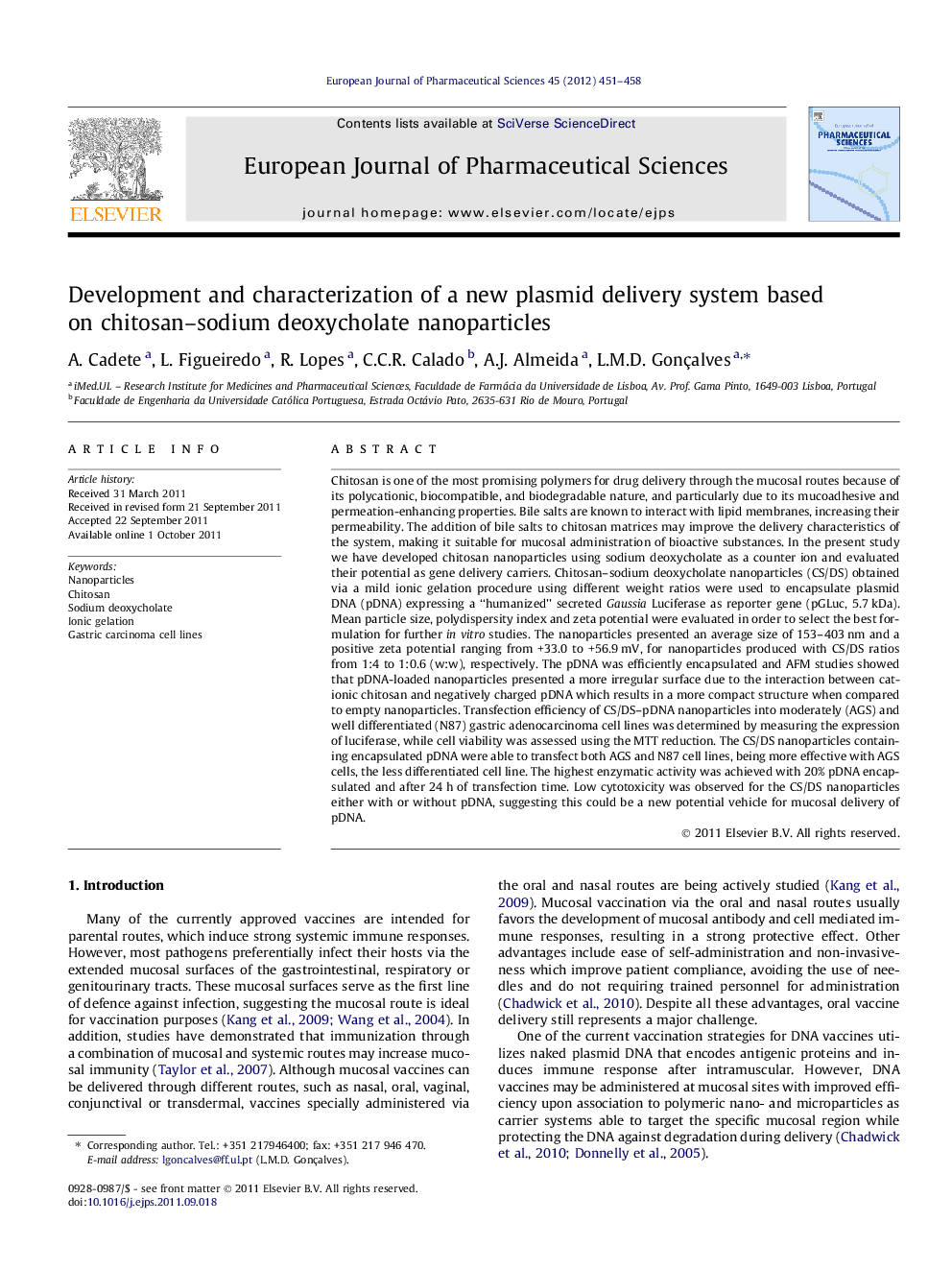| کد مقاله | کد نشریه | سال انتشار | مقاله انگلیسی | نسخه تمام متن |
|---|---|---|---|---|
| 2481453 | 1556223 | 2012 | 8 صفحه PDF | دانلود رایگان |

Chitosan is one of the most promising polymers for drug delivery through the mucosal routes because of its polycationic, biocompatible, and biodegradable nature, and particularly due to its mucoadhesive and permeation-enhancing properties. Bile salts are known to interact with lipid membranes, increasing their permeability. The addition of bile salts to chitosan matrices may improve the delivery characteristics of the system, making it suitable for mucosal administration of bioactive substances. In the present study we have developed chitosan nanoparticles using sodium deoxycholate as a counter ion and evaluated their potential as gene delivery carriers. Chitosan–sodium deoxycholate nanoparticles (CS/DS) obtained via a mild ionic gelation procedure using different weight ratios were used to encapsulate plasmid DNA (pDNA) expressing a “humanized” secreted Gaussia Luciferase as reporter gene (pGLuc, 5.7 kDa). Mean particle size, polydispersity index and zeta potential were evaluated in order to select the best formulation for further in vitro studies. The nanoparticles presented an average size of 153–403 nm and a positive zeta potential ranging from +33.0 to +56.9 mV, for nanoparticles produced with CS/DS ratios from 1:4 to 1:0.6 (w:w), respectively. The pDNA was efficiently encapsulated and AFM studies showed that pDNA-loaded nanoparticles presented a more irregular surface due to the interaction between cationic chitosan and negatively charged pDNA which results in a more compact structure when compared to empty nanoparticles. Transfection efficiency of CS/DS–pDNA nanoparticles into moderately (AGS) and well differentiated (N87) gastric adenocarcinoma cell lines was determined by measuring the expression of luciferase, while cell viability was assessed using the MTT reduction. The CS/DS nanoparticles containing encapsulated pDNA were able to transfect both AGS and N87 cell lines, being more effective with AGS cells, the less differentiated cell line. The highest enzymatic activity was achieved with 20% pDNA encapsulated and after 24 h of transfection time. Low cytotoxicity was observed for the CS/DS nanoparticles either with or without pDNA, suggesting this could be a new potential vehicle for mucosal delivery of pDNA.
AFM morphology and cross section profiles of empty (A) and pDNA-loaded (B) chitosan–sodium deoxycholate nanoparticles.Relative cell viability of gastric adenocarcinoma cell lines N87 (A) and AGS (B) exposed to empty and pDNA-loaded chitosan–sodium deoxycholate nanoparticles.Figure optionsDownload as PowerPoint slide
Journal: European Journal of Pharmaceutical Sciences - Volume 45, Issue 4, 12 March 2012, Pages 451–458